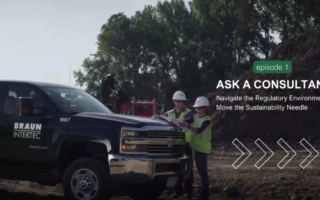Last month, we discussed how federal hazardous waste regulations in the past several years under the Resource Conservation and Recovery Act (RCRA) have created challenges for sectors such as hospitals, healthcare-related pharmacies and laboratories, retail facilities and academic institutions. Historically, these sectors have been overlooked when enforcing RCRA compliance but have recently had to step up to the challenge of meeting compliance due to federal RCRA changes and a subsequent increase in regulatory scrutiny. In this blog, we will discuss some practical steps that these generators can take right now towards meeting compliance.
After a facility, operation or business has completed an accurate, up-to-date and documentable waste inventory (which allows one to determine the actual hazardous waste compliance requirements that apply to their locations), it must develop and implement practices and procedures for hazardous waste notification; segregation; collection; storage; training; spill response; manifesting; disposal; and reporting (if required). Some of the practices and procedures for these “non-industrial” sectors will be similar but each has unique challenges. From a facility or business-wide perspective here are some practical steps to consider for each of these sectors based on their unique industries:
Hospitals, Hospital Systems and Healthcare-Related Businesses
Since this industry – encompassing urban hospitals, small clinics, medical laboratories, specialized pharmacies and more – is so diverse, one of the primary challenges is distinguishing the rules surrounding regulated medical wastes (RMW), such as infectious waste and sharps, from those relevant to chemical, pharmaceutical and other regulated wastes. In general, it works best to address the compliance requirements specific to RMW separately and independently from the compliance requirements for chemical and pharmaceutical wastes since this is the side that RCRA hazardous waste regulations apply to. This is an educational challenge as well since, traditionally, many employees and professionals in these sectors have not received adequate training or information on why RMWs differ legally from chemical/pharmaceutical wastes. In our consulting work, we have found that many in this business sector regularly conflate RMW with the other important regulatory-defined terms such as EPA/RCRA hazardous wastes; DOT hazardous materials; OSHA hazardous chemicals; and last, but not least, NIOSH hazardous drugs.
Educational Institutions
Facilities, locations or campuses under the educational umbrella have their own diverse wastes and waste streams which trigger management challenges. To complicate things further, consider the diversity within medical center campuses operated by educational institutions. One practical suggestion is for compliance leaders to engage the leader(s) of each department at least annually to help them accurately re-assess their wastes and waste streams, and look for opportunities to reduce or eliminate the use of products that trigger the highest risks and costs related to RCRA hazardous wastes. Concurrently, environmental compliance leaders should provide education to department leaders on the environmental and employee health and safety risks these products and chemicals trigger for the institution. Furthermore, this knowledge may motivate department leaders to collaborate more in improving overall program management and reducing risks.
Retailers
Given the complexity and evolution of hazardous waste regulations across the country and the nature of the retail sector, the challenge to comply is evident. Often, RCRA hazardous waste management programs are structured as “one-size-fits-all” by the corporation with their selected national waste services vendor. This approach may match the type of products sold and/or wastes generated in all locations, but doesn’t fully address the state-by-state or local (i.e. county or other) regulatory jurisdictions that often apply. Since there is typically little chance to develop and maintain local environmental compliance expertise at each location, we advise retail compliance and risk management leaders to consider industry-specific environmental compliance data management tools to help track and manage compliance requirements. Additionally, we suggest enlisting internal or external expertise at the corporate level while simultaneously enhancing internal or external compliance support in those states or jurisdictions that pose greater environmental risks and liabilities.



